Are you thinking of buying a Canon EOS SLR camera? Then you are faced with a very extensive choice. In view of the numerous models and the somewhat confusing model numbering system for laymen, many beginners have difficulty finding the right model for them. Which Canon DSLR is the right one for you depends on your personal requirements as well as your wallet. Basically, there is a simple rule to keep track of the model number jungle: The lower the model number, the more you have to pay for the camera. At the same time, however, as the price increases, so do the features and image quality.
What does the model number mean?
Beginners often have trouble choosing the right camera based on the model number. That's why we'd like to shed some light on the subject: A Canon EOS DSLR with a four-digit model number is the cheapest way to enter the world of digital SLR cameras. However, if you compare it with the three-digit models, you have to accept a few trade-offs: The noise behaviour is somewhat worse, there is no touchscreen and the resolution is also lower. A practical shoulder-mounted display and other professional features such as a splash-proof housing are only available if you opt for a two-digit Canon EOS SLR camera. Professional photographers usually choose an EOS DSLR with a single-digit model number. Here you get a very powerful image sensor, lots of accessories and a robust body with a host of handy direct buttons. But don't be confused by the models labelled "Canon EOS M": these are not SLRs, as is often assumed, but Canon's mirrorless system cameras.
Full-frame versus crop sensor - what's the difference?
Before buying, you should consider whether you need a full-frame sensor or whether a crop sensor is enough for you. Again, there are significant differences. A few years ago, full-frame sensors could still convince with a higher number of megapixels. However, this purchase argument has become relative in recent years, because crop sensors now also have a lot of megapixels. However, this only works by accepting a high pixel density with APS-C sensors. This has a considerable disadvantage: the noise behaviour is much more noticeable.
When professionals want to take photographs under poor lighting conditions, they almost always choose a Canon EOS with full format. But there is another reason for this, because the full-frame sensor gives you a whole aperture gain and therefore more light to shoot with. With a full-frame sensor, there is even more space for image information than with crop sensors because of the lower pixel density. This is why taking pictures with a full-frame camera also produces crisper images. Colours transition better, details are sharper and photos simply look more natural.
The depth of field is always slightly shallower on a Canon EOS with a full-frame sensor than on a camera with an APS-C sensor. This can be an advantage, but it can also be a disadvantage depending on the shooting situation. For portraits, for example, it is desirable to blur the background to create a beautiful bokeh. In macro photography, however, the shallower depth of field means that you have to stop down further to really get all the details in focus.
In principle, the full-frame camera has many advantages over the Canon EOS with APS-C sensor. But there are also a few disadvantages. The full-frame SLR camera is significantly more expensive than the APS-C variants. The same applies to the matching lenses and other equipment. An SLR camera with an APS-C sensor is lighter and therefore more convenient to carry. Beginners in particular are therefore well advised to choose these models. The following list once again shows you the most important advantages and disadvantages of the two sensor types in comparison:
Canon EOS with full-frame sensor
The advantages:
Better image sharpness
Lighter
Very good noise performance
Higher dynamics
The drawbacks:
Expensive to buy
Price-intensive equipment
High weight
Canon EOS with APS-C sensor
Among the advantages are:
Lower price
Lower weight
Lower weight
Totally, there are more lenses to choose from
However, a Canon system camera also has disadvantages:
More image noise
Lower sharpness
Lower dynamic range
If you are now wondering why there are more lenses for a Canon EOS with an APS-C sensor, you should read on, because this is the topic we will be addressing in the following section.
Canon EOS SLR cameras and the right lenses - What to look out for
The choice of Canon lenses for the EOS SLR cameras is enormous: from ultra-wide angle to medium focal length and telephoto, everything is available. However, if you have your eye on a particular lens, or even if you already own a Canon lens and are now just looking for the right SLR camera, there is one detail you should watch out for: A Canon EF-S lens is only suitable for cameras with an APS-C sensor. These lenses are designed to make the most of the special angle of view of crop sensors. Therefore, they will not work on full-frame cameras. However, a normal EF lens that is actually intended for full-frame cameras can also be used with models with crop sensors. For this reason, the choice of lenses is also greater when you choose a Canon EOS DSLR with a crop sensor.
The right Canon EOS DSLR for amateur photographers and beginners
Are you a beginner in the world of digital photography or are you already an amateur photographer who has already worked with a compact or system camera? In either case, a Canon EOS with a four-digit model number is a good choice. Such a camera is inexpensive and offers all the essential functions you need for DSLR photography. It's easy to use and compact in design, so you can take your Canon EOS DSLR with you wherever you go. The four-digit models are therefore also popular when travelling.
If you have already gained some experience in digital photography and would now like to deepen this, you can also go for a three-digit Canon EOS. These models are intended for amateur photographers, but are already equipped with some practical features, such as a swivelling display that can be operated via touch.
Tip: If you are buying a DSLR for the first time, you should choose a practical set right away. Then a kit lens such as the 18-55 mm is already included in the scope of delivery, which is well suited for gaining initial experience. Later, you can buy higher-quality lenses.
Semi-professionals and professionals choose two- or single-digit Canon SLR cameras
For a move from an entry-level DSLR to a more professional device, the two-digit EOS models are a good choice. They feature a power-saving shoulder-mounted display and offer other highlights such as a splash-proof body, sharp imaging performance and low-noise images even at high ISO. For more than 1,000 euros, you can buy a single-digit Canon DSLR. Almost all models in this league are equipped with a full-frame sensor, which offers twice the area of an APS-C sensor and even 30 times the area of a compact camera. Accordingly, the images delivered by the single-digit EOS cameras are crisp and sharp.
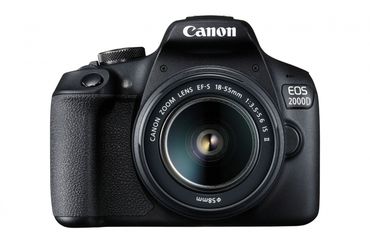

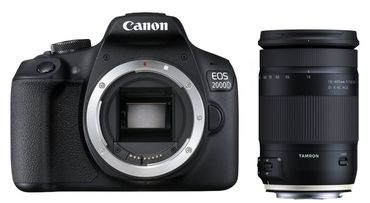
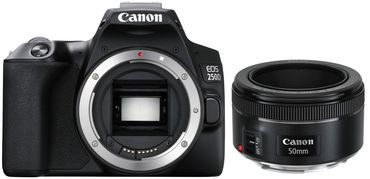
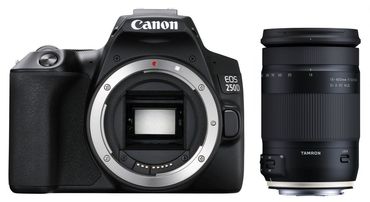
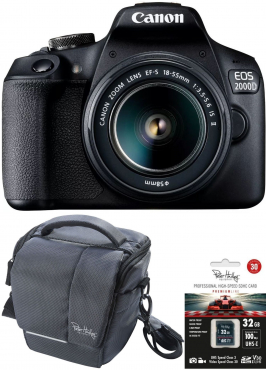
Simply subscribe and benefit as a newsletter recipient every week: